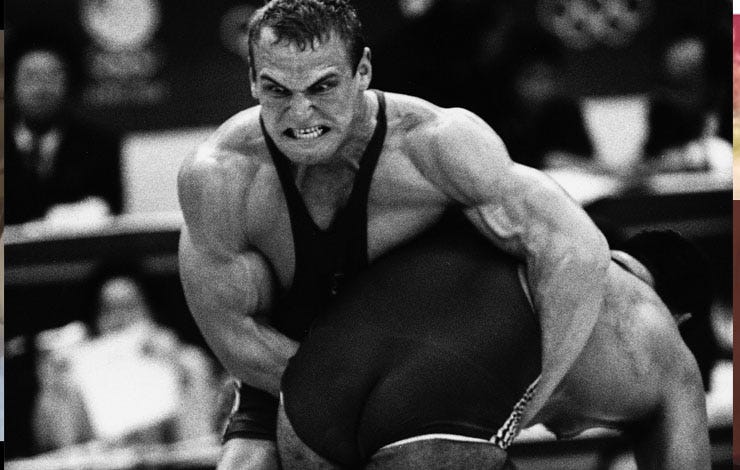This does not sound like a staged fight
Karelin’s story about his one and only MMA fight
Karelin is the greatest Greco-Roman wrestler ever lived, a three-time Olympic gold medalist known for his ungodly strength and skill. According to Joe Rogan, a popular UFC commentator, “Karelin could lift 300-pound elite wrestlers like pillows”. Even today, at 52, he’s looking fit and as intimidating as in his prime.
In his most recent interview on Russian TV, Karelin shared some intriguing details on his one and only MMA fight against a legendary karate master,
Akira Maeda. This epic fight took place in Japan, Yokohama Arena, in 1999. At that time, the Japanese were in awe not only for his stellar wrestling career but also for especially freakish size and looks.
It all started when Karelin arrived in Japan to support his teammates as a “billboard”, as he describes himself. Perhaps due to language barriers, Karelin ended up in the “fight call out” press conference where Maeda was trying to trash-talk Karelin to hype up the fight. However, Karelin was reluctant to take the MMA fight seriously since he was preparing for an important wrestling championship in Russia. Maeda, however, spent six months training in the US with elite wrestlers and even made a 5-hour documentary — Karelin actually watched it all out of curiosity.
Due to unforeseen circumstances, the wrestling championship in Russia was postponed, and it opened up a window for the fight in Japan. Karelin chose to fight without gloves in his usual wrestling gear. He was amused to see reporters nearly “dying” from the toxic odor emanating from it as he forgot to wash it the night before.
During the fight, Karelin shared that Maeda low-kicked him a couple of times which were unexpectedly painful. In a split-second, he decided to change the gameplan to make sure Maeda feels the same pain as quickly as possible. As he was contemplating this plan, he saw a high kick flying directly to his head, and to this day he remembers size “47” (11.5 US) printed on Maeda’s shoe. Out of fear, the great Karelin closed the distance and clutched Maeda’s head. He vividly recalls how Maeda’s stomach growled in Karelin’s tight choke until the fight was ultimately stopped proclaiming Karelin’s dominant victory…






